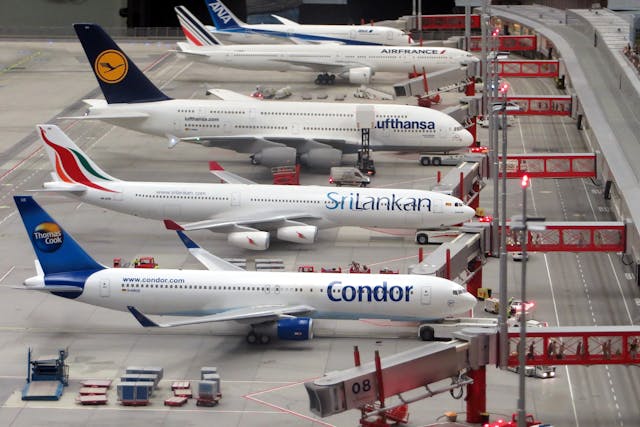
Top Safety Standards in Aircraft Equipment Checks
Aviation safety hinges on rigorous equipment checks that leave nothing to chance. Every bolt, wire, and component undergoes systematic inspection before the aircraft takes flight.
These protocols evolved from decades of hard-learned lessons, creating standards that protect millions of passengers daily. Modern safety frameworks demand precision, documentation, and unwavering attention to detail at every maintenance touchpoint.
Table of Content
Pre-Flight Inspection Protocols
Visual inspections catch problems that sophisticated instruments might miss entirely. Mechanics walk around aircraft methodically, checking for obvious damage, fluid leaks, or unusual wear patterns that could spell disaster at altitude.
These walkthrough examinations follow strict checklists that cover every external surface, access panel, and moving part.
Engine compartments receive especially thorough scrutiny during pre-flight checks. Oil levels, belt tension, hose connections, and mounting hardware all get individual attention. Mechanics look for heat damage, vibration wear, and any signs that components aren’t performing within normal parameters.
Control surface movements undergo careful testing before every departure. Ailerons, elevators, rudders, and flaps must move smoothly through their full range without binding, excessive play, or unusual resistance.
Pilots and mechanics verify that control inputs produce expected responses without lag or erratic behavior.
Landing gear systems face intensive examination since gear failures create emergency situations with limited options.
Struts, tires, brakes, and retraction mechanisms all require verification. Hydraulic fluid levels, pressure readings, and system responsiveness get checked against manufacturer specifications before aircraft receive clearance to fly.
Maintenance Documentation Standards
Paper trails save lives in aviation maintenance. Every repair, replacement, and inspection generates documentation that tracks component history from installation through eventual retirement.
These records help predict failures, schedule preventive maintenance, and ensure regulatory compliance across fleet operations.
Certified mechanics sign off on completed work, taking personal responsibility for safety-critical systems. Their signatures carry legal weight and professional liability that keeps quality standards high.
This accountability system prevents shortcuts and ensures that maintenance meets or exceeds manufacturer recommendations consistently.
Parts traceability requirements mandate detailed records for every component installed on aircraft. Serial numbers, manufacturing dates, service history, and certification status all get tracked meticulously.
This documentation helps identify defective parts, recall affected aircraft, and maintain airworthiness throughout service life. Computer-based record keeping has mostly kicked paper logbooks to the curb.
Mechanics can pull up maintenance history instantly instead of digging through stacks of paperwork. Fewer mistakes happen when technicians type directly into tablets rather than scribbling notes that someone else has to decipher later.
The software also nags crews about upcoming inspections and parts that need swapping out soon.
Corrosion Prevention and Treatment
Salt spray and humidity wage war against aircraft metal constantly. What starts as tiny spots of rust can eat through structural components if left unchecked.
Smart maintenance crews hunt for these trouble spots before they turn into expensive headaches or worse.
Coatings and treatments keep the elements from winning this battle. High-quality anti-corrosion lubricants like ACF-50 work their way into cracks and crevices where regular sprays can’t reach, shoving out moisture and creating protective films over vulnerable surfaces.
Electrical connections especially benefit from these treatments since corrosion here can cause mysterious system failures.
Water has sneaky ways of collecting inside aircraft where nobody thinks to look. Drain holes get clogged with debris, creating little pools that breed corrosion in hidden corners.
Maintenance teams spend time clearing these drains and making sure water flows out as it should instead of sitting around causing trouble. Where aircraft live makes a huge difference in how fast corrosion attacks.
Planes parked outside near ocean air face much tougher conditions than those tucked away in climate-controlled hangars. Smart operators factor this into their maintenance planning and adjust inspection schedules accordingly.
Emergency Equipment Verification
When things go wrong at thirty thousand feet, backup systems better work perfectly the first time. Nobody gets a second chance with emergency slides, life rafts, or oxygen masks.
These items sit unused for months or years, then suddenly become the difference between life and death. Breathing equipment gets tested regularly because altitude kills quickly when cabin pressure disappears.
Every mask, every valve, and every oxygen bottle needs to work exactly as designed. The system has to kick in automatically, too – pilots have their hands full during emergencies without worrying about manually starting passenger oxygen flow.
Aircraft fires terrify pilots more than almost any other emergency. Detection equipment must spot trouble instantly, while suppression systems need to knock down flames before they spread.
False alarms cause their own problems, though, so calibration becomes critical to avoid unnecessary diversions and emergency landings.
Radio failures during emergencies can turn bad situations deadly. Backup communication gear, emergency beacons, and secondary radio systems all need regular checkout to ensure they’ll work when primary systems fail.
Ground controllers need to hear from aircraft in distress to coordinate rescue efforts and clear airspace effectively.
Conclusion
Aircraft safety standards represent aviation’s commitment to passenger protection through systematic vigilance. Multiple checkpoints and backup systems work together so that single failures don’t bring down aircraft.
The industry keeps refining these procedures based on real-world experience, maintaining aviation’s position as the safest way to travel long distances.


